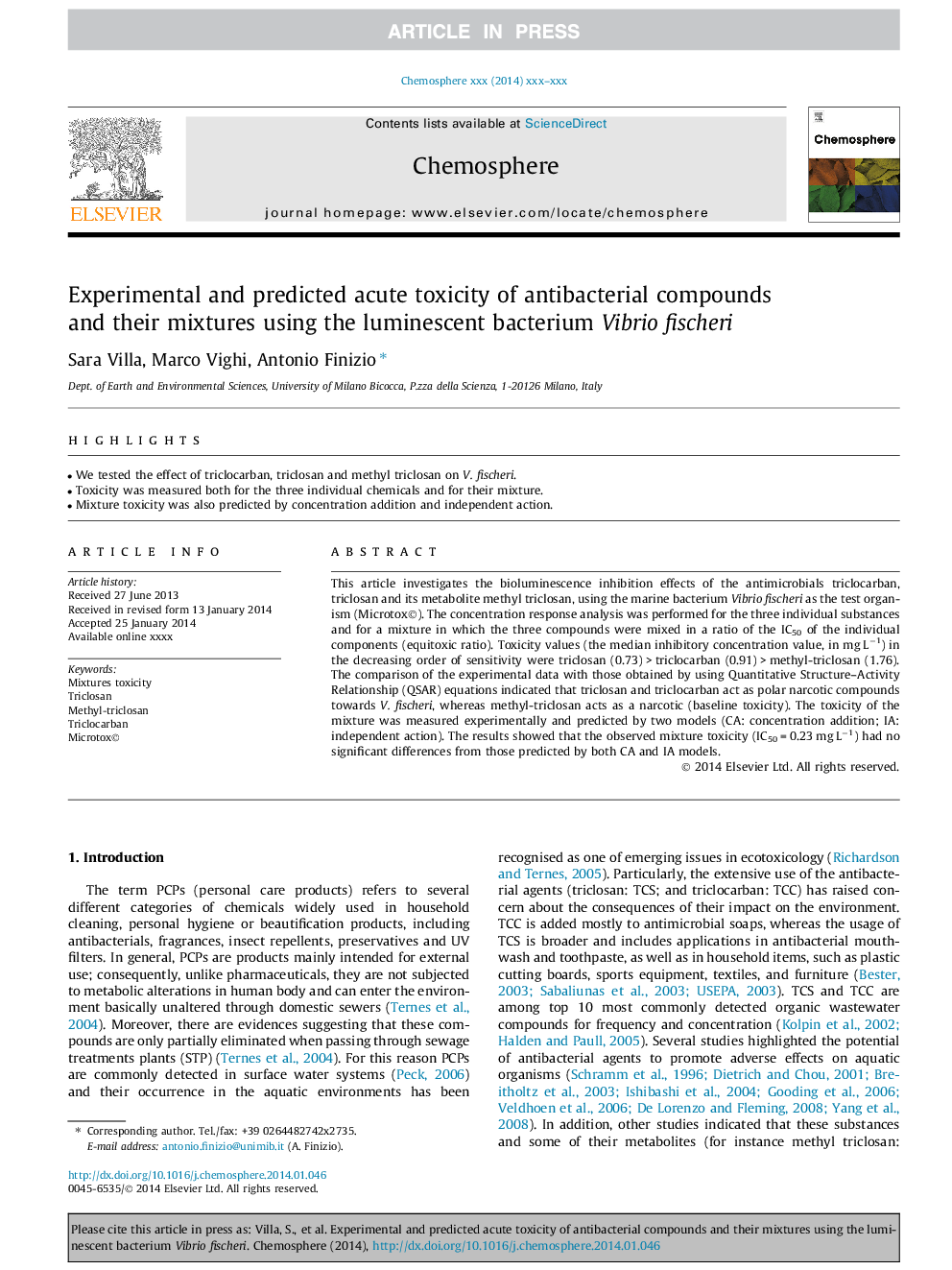| Article ID | Journal | Published Year | Pages | File Type |
|---|---|---|---|---|
| 6309382 | Chemosphere | 2014 | 6 Pages |
Abstract
This article investigates the bioluminescence inhibition effects of the antimicrobials triclocarban, triclosan and its metabolite methyl triclosan, using the marine bacterium Vibrio fischeri as the test organism (Microtox©). The concentration response analysis was performed for the three individual substances and for a mixture in which the three compounds were mixed in a ratio of the IC50 of the individual components (equitoxic ratio). Toxicity values (the median inhibitory concentration value, in mg Lâ1) in the decreasing order of sensitivity were triclosan (0.73) > triclocarban (0.91) > methyl-triclosan (1.76). The comparison of the experimental data with those obtained by using Quantitative Structure-Activity Relationship (QSAR) equations indicated that triclosan and triclocarban act as polar narcotic compounds towards V. fischeri, whereas methyl-triclosan acts as a narcotic (baseline toxicity). The toxicity of the mixture was measured experimentally and predicted by two models (CA: concentration addition; IA: independent action). The results showed that the observed mixture toxicity (IC50 = 0.23 mg Lâ1) had no significant differences from those predicted by both CA and IA models.
Related Topics
Life Sciences
Environmental Science
Environmental Chemistry
Authors
Sara Villa, Marco Vighi, Antonio Finizio,
